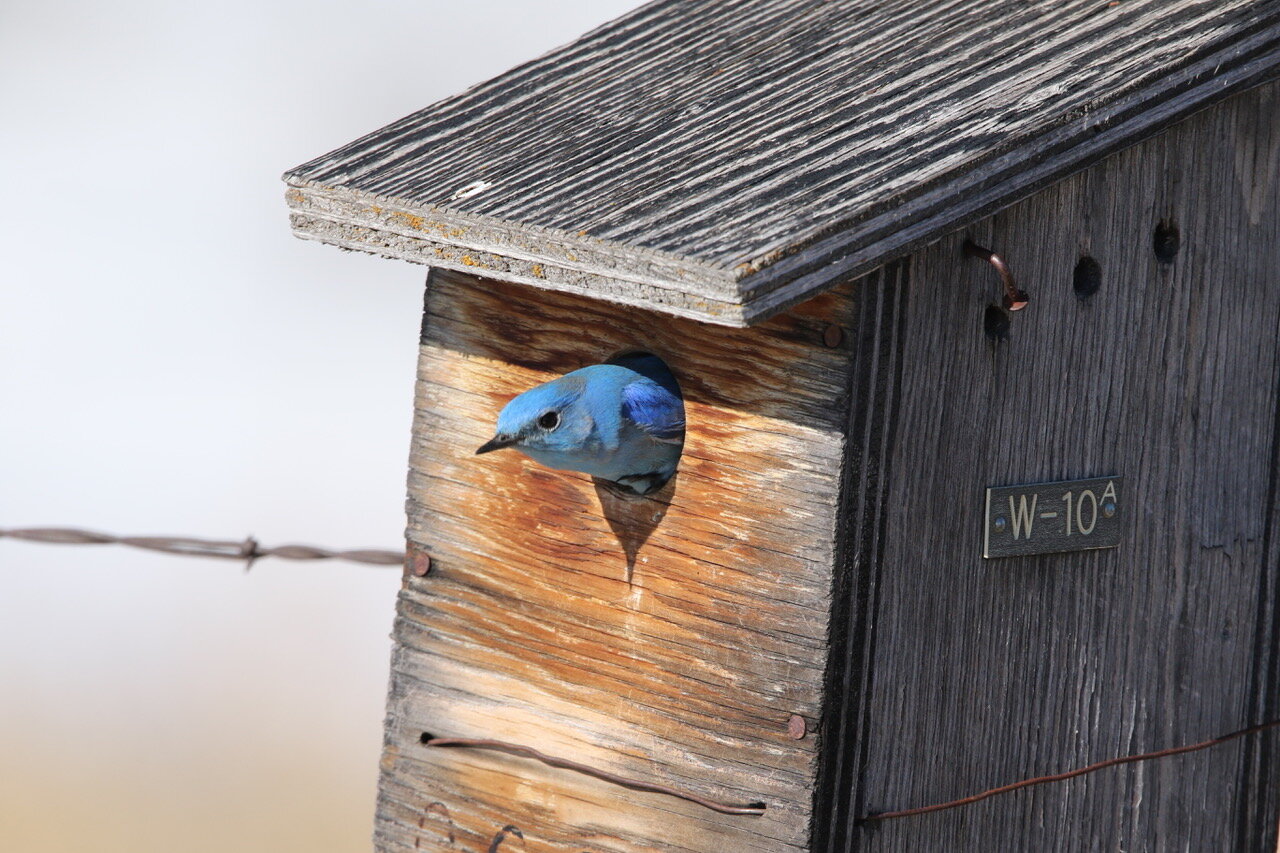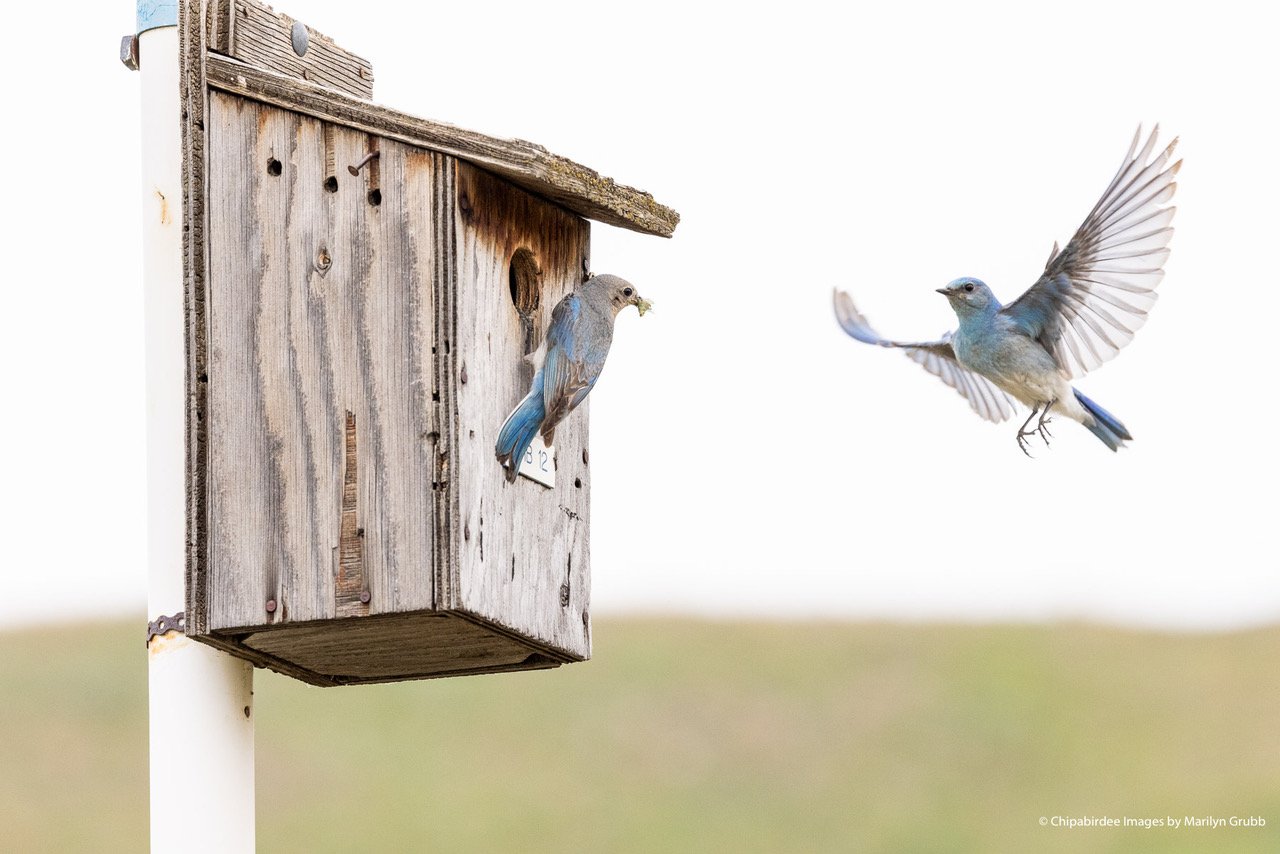The Remarkable Journey of the Mountain Bluebird Trails Conservation Society
In the 1970s, amidst a wave of environmental activism, a small bird with striking blue feathers became a symbol of nature’s delicate balance in Southern Alberta.
The Mountain Bluebird, facing threats from habitat destruction and invasive species, found a champion in Duncan Mackintosh and the budding community of conservationists he inspired. This marked the beginning of the Mountain Bluebird Trails (MBT), an initiative rooted deeply in community effort and ecological stewardship.
Humble Beginnings
The spark that ignited MBT was struck in 1974 when Duncan Mackintosh, inspired by a presentation at the Lethbridge Naturalists' Society, embarked on a mission with just $14.35 in funding to construct 40 nest boxes. This small act laid the foundation for what would become a vast network of trails aimed at saving the Mountain Bluebird. Despite early challenges, with only a few boxes occupied initially, perseverance led to gradual success.
Growth and Milestones
By 1975, the project gained momentum as Mackintosh expanded the trail to include 43 new nest boxes in the Lethbridge area. His unwavering dedication soon inspired others, and as the years progressed, the number of nest boxes and volunteers grew exponentially. By 1980, the initiative had caught the attention of Alberta Fish & Wildlife, which provided grants that further fueled the expansion.
There was an ever growing number of volunteers involved supporting the work of the Mountain Bluebird Trails. A number of them are listed in the Society’s history pages.
Harold Janecke
Ralph Erdman
Les Sarsfield
Edmonton Journal 1989
Innovation in Conservation
Macintosh observed the proximity to trees is important in placing Bluebird nest boxes. They should be no farther than a mile from the trees in the river valley. Openings are pointed away from prevailing winds, with the shortest route to the nearest trees, so the young bluebirds head in the proper direction on maiden flights.
During the 1980s, Mackintosh observed that the existing nest box designs were not ideally suited for Mountain Bluebirds. He innovated new designs with larger openings and more room inside, which significantly improved the survival rates of the birds.
These design enhancements were crucial in increasing the number of bluebirds that successfully fledged each year.
In 1989, at the request of the Federal Government, Mackintosh and Ray Harris attend Canada Day Celebrations on Parliament Hill with a display representing Alberta showcasing the work of the Mountain Bluebird Trails Conservation group to over 100,000 people.
Recognition and International Connections
The effectiveness of the MBT did not go unnoticed. The society was recognized with several awards, including the prestigious Lawrence Zeleny Award for its significant contributions to bluebird conservation. The methods and successes of the MBT become intricately linked with similar conservation efforts in Montana and across North America.
MBT’s mission continued to thrive as more people became interested in the movement. It continued to garner support and accolades for its vital work. This period underscored the society's lasting commitment to not just the Mountain Bluebird but also the broader environmental conservation ethos.
In 1995, the Mountain Bluebird Trails Conservation Society (MBTCS) was officially registered as an Alberta Society and a Canadian Registered Charity. Approximately 60 volunteers were reported to be involved. Founding directors include: Duncan Mackintosh, Bob Harrison, Ralph Erdman, Harold Janecke, Sheila Perry and Ray Harris.
This same year MBTCS recognized with an Alberta Emerald Award in the Community Group category for “Encouraging the Repopulation of Mountain Bluebirds.“
By this time, Mackintosh, 68, had received 11 awards from various organizations for his dedicated efforts to bird conservation, including Lethbridge Fish and Game and the Alberta Naturalists to the John and Norah Lane Award for Outstanding Contribution to Bluebird Conservation by an individual from the North American Bluebird Society (NABS) in Portland, Oregon.
The Lethbridge Herald reports that “in the past 15 years more than 47,000 Mountain Bluebirds have been fledged. In the same time period another 33,000 have been banded.” (July 23, 1995, p.31)
Ongoing Dedication
Jim Leitch and Steven Shumborski are two long-time dedicated MBTCS volunteers
Today, the MBTCS stands as a beacon of successful community-led conservation. The story of its founding and growth is a powerful reminder that passionate individuals can drive significant environmental change. The Mountain Bluebird, once on a path to decline, is no longer a species of concern, symbolizing hope and the positive impact of dedicated conservation efforts.
MBTCS works to bring together Trail Monitors from across Southern Alberta - spanning Medicine Hat & Cypress Hills area in the east to Pincher Creek & Oldman River headwaters in the west, and north from the Calgary Bluebird Monitors to the southern Montana Bluebird Trails. The Society currently has a trail network of over 2,700+ nest boxes.
The history of the Mountain Bluebird Trails Conservation Society exemplifies the profound influence of grassroots movements in environmental conservation, showing how localized efforts can achieve global significance in the fight to preserve our natural world.
Do you want to volunteer with MBTCS?
There are so many ways you can support Mountain Bluebirds! We are always looking for support with:









